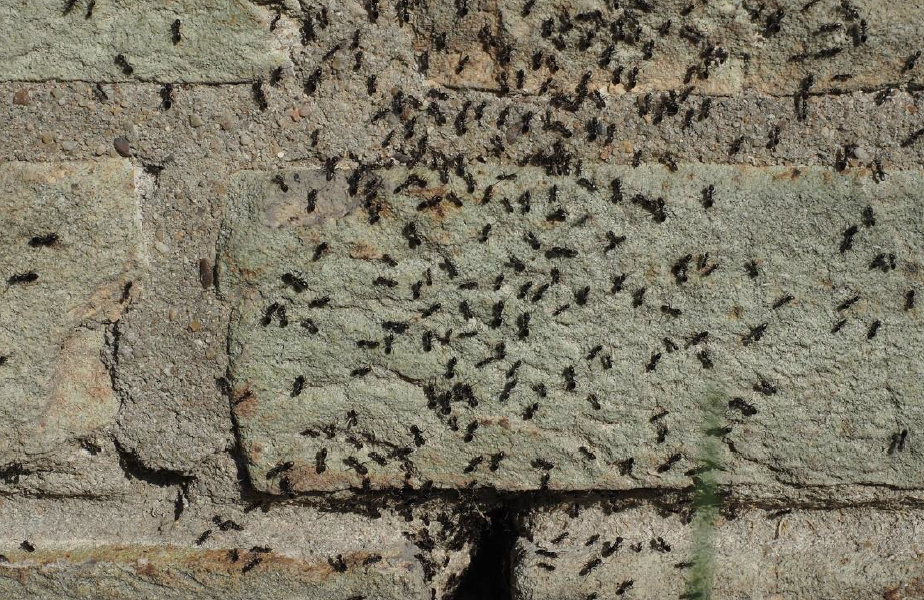Freezing the soil is an effective tool in controlling Tapinoma nigerrimum
(Translated from Dutch)
Freezing the soil appears to be an effective tool in controlling and exterminating the Tapinoma nigerrimum. In the Netherlands this insect is appearing in more places every year and causing serious nuisance in and around houses. The positive results are aparent from a study carried out by WUR, EIS and Tibach on behalf of the Ministry of Agriculture, Nature and Food Safety.
The purpose of this research was to test the effect of cold on Tapinoma nigerrimum using this unique control method developed by the Tibach whereby the soil is frozen to a depth of over 1 metre. Previous research into the potential of this method in treating Japanese knotweed had already shown that this invasive plant does not survive freezing either, while there are no adverse effects on soil life and the seed bank. Freezing of the soil also can considerably limit the use of chemical pesticides.
Lots of nuisance from these invasive specie
These ants are being observed in more and more places in the Netherlands, which are able to build “supercolonies” of up to hundreds of meters in length. If left on its own, a single nest can grow to cover several streets. Outdoor nuisance consists of sagging gardens and sidewalks. Indoor the nuisance is more serious. The ant can be found in tight and warm places and will settle there. The ant came to the Netherlands by imported plants from Southern Europe. A small colony may have traveled along in a flower pot, which can spread to all kinds of warm places under the pavement and near buildings after the plant has been placed in a garden. The colonies can develop and expand quickly, which can also cause more and more nuisance.
How does this freezing method work.
Stainless steel lances are placed in the soil until a depth of 1 metre and cooled down utill -35 ºC, which cools the soil. This causes the ants to freeze and to exterminate the colony at this location. Stones or tiles can be removed from pavements to make place for the lances. After the treatment, they can be replaced again. This way no excavation work is needed.
Test site results
The investigation has now been completed and the report has been released. The conclusion based on this study is that freezing is an effective treatment method for controlling and treating Tapinoma nigerrimum. It is recommended to carry out the treatments during cool seasons, because the ants are very active during warm periods and shows flight behaviour. In autumn and winter they hide in the soil against the cold, where more ants can be exterminated during a treatment.
Tibach: we are pleased that our machine can also be used against this invasive ant that is causing a lot of problems. We would like to get in touch with municipalities and provinces that are having issues with Japanese knotweed or Tapinoma nigerrimum.
Our next project will be a collaboration with the Dutch water authorities to help them treating floating pennyworth. This is an aquatic plant that is on the European Union list of unwanted invasive species and is also causing a lot of nuisance. During summer periods, this plant is able to cover entire water surface with dense, floating mats several decimetres thick. Until now there are no suitable control methods available.

